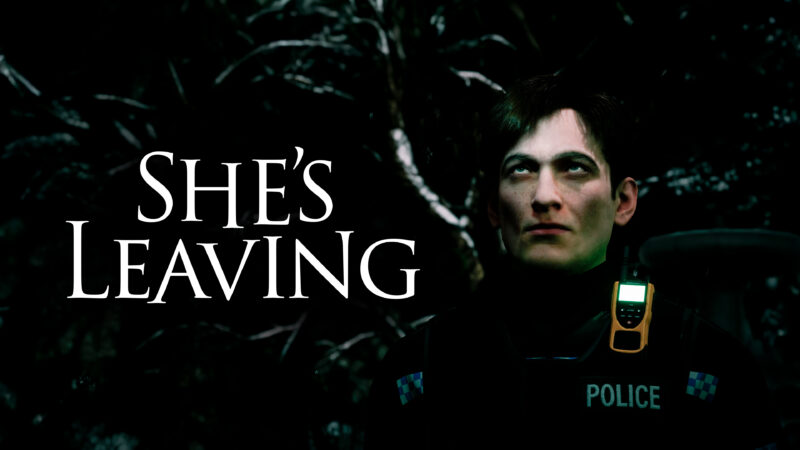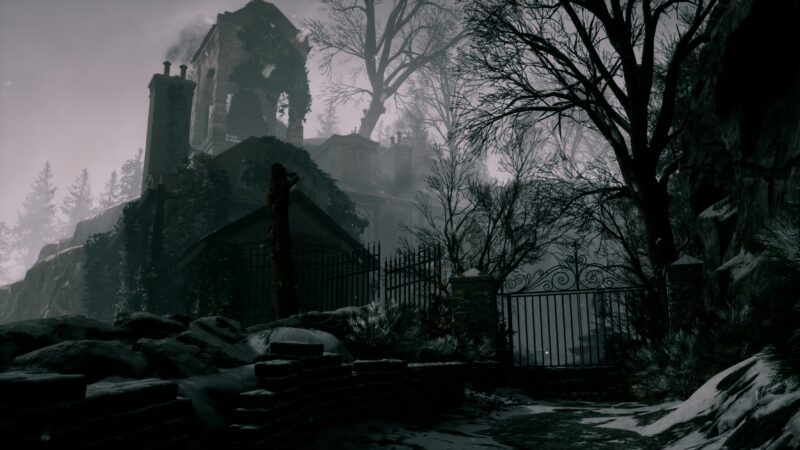She’s Leaving is an upcoming indie “forensic horror” title that has personally intrigued me since I first caught wind of the project. The game features forensics expert Charles Dalton, investigating an allegedly unkillable serial killer by illegally entering various crime scenes.
To learn more about the creative vision and various inspiration sources behind the project, we sat down with Sam Griffiths, co-founder of Blue Hat Studio, to discuss how She’s Leaving came to be and the ethos behind the forensic horror subgenre.
ROH: You’ve cited True Detective, Dexter: New Blood, and Resident Evil as key inspirations. Can you walk us through how each of those works shaped the tone, pacing, and overall identity of She’s Leaving?
True Detective was a major turning point for the writing. The dialogue in that show is subtle, loaded, and reveals character without needing big speeches. After watching it, I realized I had to rewrite a lot of She’s Leaving. Not to imitate it, but to push myself to explore the characters more deeply and let their personalities come through in the smallest lines. It changed how I approached conversations, pacing, and emotional tension.
Dexter: New Blood influenced the psychological side of the game. Dexter is obsessive and lonely, and those traits drive almost everything he does. That combination makes him desperate, and that desperation is something people can relate to, minus the killing. In She’s Leaving, it is those human qualities that inspired parts of Charles as a character, especially the sense of isolation and the obsessive need to understand what is happening around him.
Resident Evil shaped the environmental side of the game. Their locations are masterclasses in atmosphere, from the lighting to the sense of isolation to the way the worlds feel hostile. Their puzzles are also incredibly creative. We wanted to follow that direction and build environments that make the player feel alone and uneasy, with puzzles that feel like a natural part of the space rather than simple obstacles.
Together, these influences created the tone of She’s Leaving. Intimate dialogue, a character driven psychological edge, and atmospheric environments that build tension.
ROH: True Detective is known for its oppressive atmosphere and slow-burning dread. How did you approach translating that kind of psychological tension into interactive gameplay?
What stood out to me in the first season of True Detective was how often the show focused on the landscape falling apart. For me, that visual decay symbolizes characters who cannot move on. They cannot rebuild who they are if they are stuck in the past.
In She’s Leaving, there are moments where the world around you begins to break down in a similar way. The environment reaches a point where it simply collapses under its own weight. You can read that as a sign that it is time to rebuild, or you can read it as a sign that things have gone too far to fix. That choice, and the tension around it, is left to the player.
ROH: Dexter: New Blood leans heavily on forensic detail and the inner conflict of someone who “looks too closely.” How did those themes influence your protagonist and the game’s investigative mechanics?
Obsession can make someone incredibly skilled at what they do, but it can also damage everything else in their life. In She’s Leaving, that plays directly into how Charles thinks and how he investigates. When you solve a blood spatter, Charles explains exactly what he is seeing and why it matters. You hear the precision, the focus, and sometimes the arrogance in the way he breaks down each pattern. His strengths and flaws are both visible in the mechanics themselves.
ROH: Resident Evil has such a strong legacy in survival horror. What specific elements from that series informed your approach to level design, resource management, and enemy encounters?
Level design was a major inspiration for us. Resident Evil has an incredible way of giving players freedom when solving puzzles, especially in places like the R.P.D. station. We wanted to capture that same feeling in She’s Leaving. Players can approach challenges their own way, there is no set route, and you can explore with just your taser. Of course, you still need to watch out for the angry Welsh man screaming for blood.
ROH: You mentioned studying real crime scene reports. What did that research process look like, and what surprised you most while diving into authentic forensic documentation?
I’ll be honest, it was bleak, but it was also fascinating to see how the forensic process actually works. In She’s Leaving, we streamline a lot of the tedious parts to make it fun and engaging as a game.
What surprised me the most was how delicate the process is and how easy it is to accidentally ruin a crime scene. A lot of people have gotten away with their crimes because of small mistakes or oversights, and that precision (or lack of it) really stuck with me.
ROH: Blood spatter analysis is notoriously complex in real-world investigations. How did you balance scientific accuracy with playability when implementing those mechanics into She’s Leaving?
I’ve always been fascinated by how Dexter could look at a single blood droplet and explain exactly what happened. In She’s Leaving, we focus on the visual side of solving a blood spatter rather than the math and physics behind it.
At its core, the mechanics are accurate to the information I’ve studied, but blood spatter analysis is ultimately a subjective process. That gives us some room to take creative liberties for entertainment while still staying true to the principles of how it actually works.
ROH: Forensic teams have highly structured workflows. Did any specific procedures or real-world methodologies directly influence your in-game tools or investigative sequences?
In She’s Leaving, the player starts the blood spatter process by deploying a tripod. From there, blood strings shoot out and wrap around the pattern of blood on the wall. In real life, this is used to calculate the trajectory and origin of the blood, but we don’t go into the full complexity in the game. It works as a visual indicator that supports the mechanic and helps make the process feel tangible and engaging.
ROH: Horror often leans into exaggeration. How did you ensure the game stayed grounded while still delivering a sense of dread and tension?
Basing the game around a serial killer was key to keeping it grounded. The main threat is human. He looks like you, he just happens to be bigger and angrier. Pair that with a mansion caught in a storm that is breaking apart around you, and the game naturally feels high pressure. One misstep and you are gone. There is no fancy death animation or cinematic ending. You are simply snuffed out in an instant. That immediacy keeps the tension real and the dread constant.
As a two-man studio, what were the biggest challenges in bringing such a research-intensive and visually detailed horror project to life — and what advantages come with keeping the team small?
In the early days of the project, the hardest part was finding the information we needed. We didn’t really know where to look. I think the key to creating strong visual detail is lighting. Once you learn how to control it, it becomes much easier to make something feel realistic. After that, it is mostly research and studying how other games handle their environments.
Time and budget were always challenges as well. We both have day jobs, so we would come home and work all night, every night, for years. That can be grueling, especially when things aren’t going your way. But with a two-man team, you always have someone going through the exact same thing. That creates a strong sense of trust and connection with your partner, which makes the grind more manageable.
ROH: She’s Leaving blends procedural investigation with psychological horror. When players eventually step into this world, what emotional or thematic experience do you hope stays with them after the credits roll?
We want players to leave the game thinking about the choices people make when pushed to their limits. About obsession, guilt, and the consequences of pursuing the truth at any cost. The hope is that the tension, the isolation, and the moral gray areas stay with them, making them question how far they themselves would go when faced with similar pressures. It’s less about scares and more about leaving a sense of unease that lingers long after the credits roll.
That’s all we have as far as the interview goes. As She’s Leaving approaches its release date of December 2, 2025, you can expect a review from myself in the coming days. The game will be available for purchase on PC for $13.99 with a 10% discount on launch, and PlayStation 5 and Xbox consoles for $16.99. You can wishlist the game on Steam as we approach the game’s winter release window.








